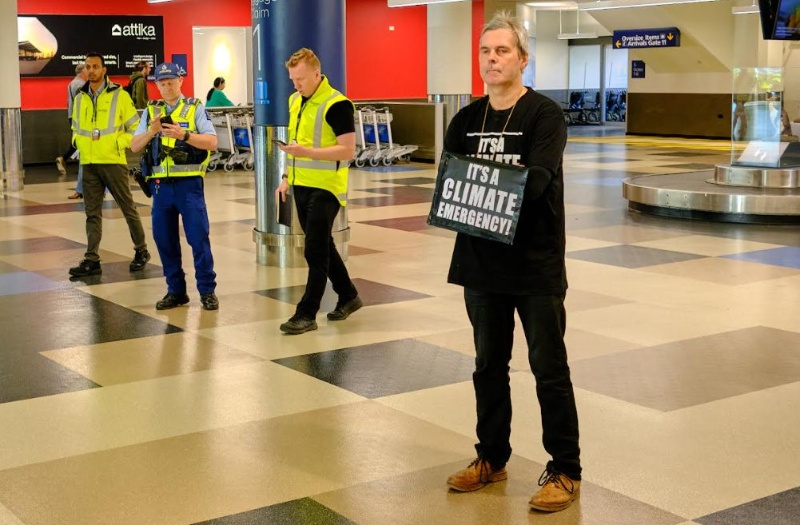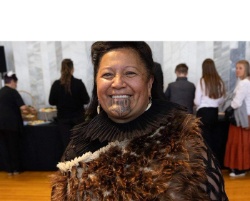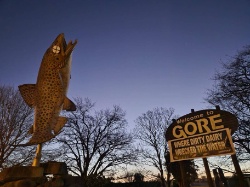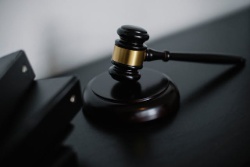Mussels in place to start testing
Mussels in place to start testing
Hundreds of juvenile green-lipped mussels attached to various structures within and outside Gisborne harbour have begun an important role in monitoring the quality of water in the bay.
Mussels were chosen to help assess water quality because they are filter feeders and any traces of contamination will show in their gut. Samples will be tested for trace chemicals and the presence of human faecal indicators, bacteria and viruses specific to the human gut. More general indicators of environmental contamination from animals and other sources are expected to be identified.
Several mussel lines, each two metres long with hundreds of mussels on each, have been placed in the harbour and bay since late June and more lines may be placed in the bay over the next six months.
Gisborne District Council’s Wastewater Technical Advisory Group has contracted Bill and Ian Ruru of Maumahara Education to undertake a short-term pilot study and develop a monitoring programme that includes using kaimoana as natural biological indicators of health. This will form part of the ongoing monitoring of the Gisborne Wastewater Treatment Plant, required under its resource consent.
Mussels (kutai), tuatua, tuangi (cockles) and pipi will be sampled from between The Cut at the harbour entrance to the Wherowhero Lagoon.
Ian Ruru said the mussel lines were brought in from the west coast of the North Island.
“We made sure to obtain the cleanest mussels available from a farm on the West Coast. This will provide a fair comparison with local kaimoana tested before the treatment plant was commissioned in January.”
John Mackay of Gisborne business dnature diagnostics & research Ltd will test for human and animal DNA. Although ESR had tested mussels and other shellfish for some time, he believed this was the first time that so-called sentinels had been placed to monitor wastewater in New Zealand. The method had been described overseas.
Technical Advisory Group chairman Bevan Turnpenny said mussels were ideal because they could be secured in one place and were easy to collect.
“This ensures consistency over time which can’t be obtained from spatially variable benthic species such as tuatua. We are also looking to this pilot study to help us improve the measurement of water quality indicators without any increase in cost.”
Medical Officer of Health Dr Bruce Duncan said the development was exciting for various reasons.
“Firstly, we are using a part of the biological life of the bay to monitor wastewater treatment effectiveness. While it’s not the first time mussels have been used, their use (as a monitor) links the impact of human waste and the effectiveness of its treatment directly to any impact on kaimoana. The applications are much wider, though, with the possibility that we can use the shellfish to monitor the state of all contamination in the bay including that from surface and stormwater runoff into rivers.
“Linking with DNA testing increases the sophistication of testing. We can now identify the source of contamination much more accurately, for example, whether is it animal or human. There are further exciting opportunities with this work. Shellfish may have an important role to play in improving water quality, indeed, they may have a specific place in wastewater treatment.
“I think this work also reflects the innovative local approach to wastewater management – the whole community including tangata whenua, industry and Council working collaboratively to a common goal of improving the environment we live and play in.”
ENDS


 Bruce Mahalski: Dunedin Airport Art Protest Leads to Trespass Notice
Bruce Mahalski: Dunedin Airport Art Protest Leads to Trespass Notice Health Coalition Aotearoa: PM Must Act To End Tobacco Industry Interference In His Government
Health Coalition Aotearoa: PM Must Act To End Tobacco Industry Interference In His Government Te Pāti Māori: More Mokopuna Made Homeless In Te Tai Tokerau, Kia Ora E Tama
Te Pāti Māori: More Mokopuna Made Homeless In Te Tai Tokerau, Kia Ora E Tama Green Party: Greens Launch Petition For Regional Passenger Rail
Green Party: Greens Launch Petition For Regional Passenger Rail Taxpayers' Union: NEW POLL | The Best (And Worst) Big-City Mayors
Taxpayers' Union: NEW POLL | The Best (And Worst) Big-City Mayors Greenpeace: Gore’s Iconic Brown Trout Statue Latest Victim Of Township’s Drinking Water Crisis
Greenpeace: Gore’s Iconic Brown Trout Statue Latest Victim Of Township’s Drinking Water Crisis Environmental Defence Society: Another Offensive Launched In The Government’s War On Nature
Environmental Defence Society: Another Offensive Launched In The Government’s War On Nature


